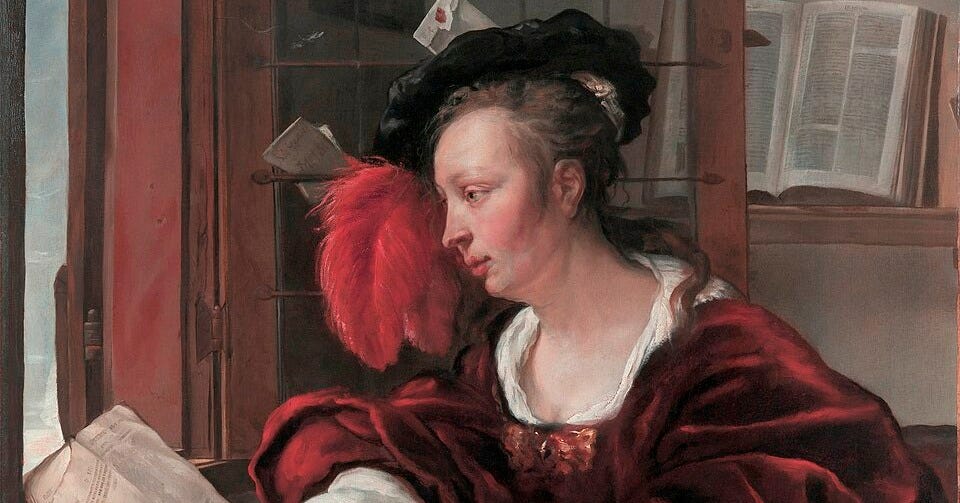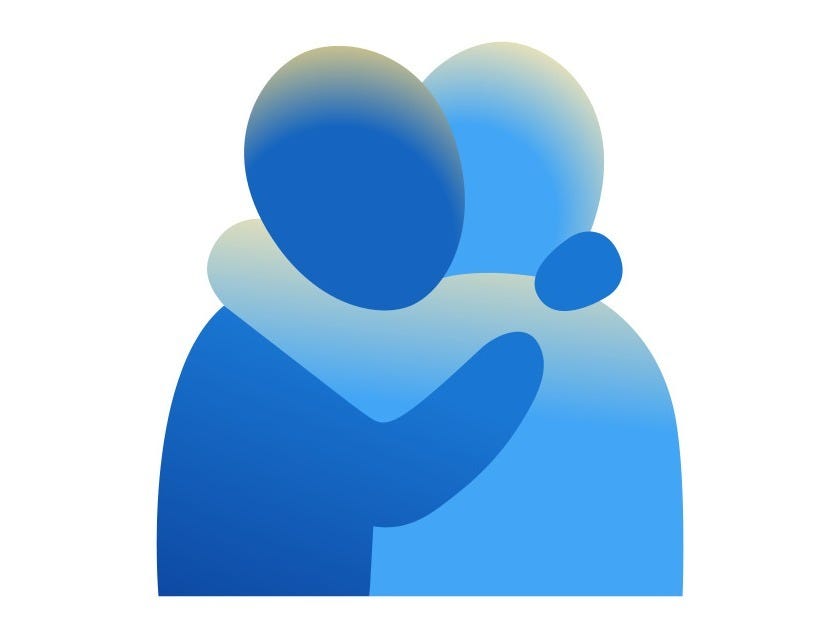It’s not often that people have the courage and moral fortitude to say this but I will: I’m sorry, indeterminate blue blob. It’s not you, it’s me.
In the eight and a bit months since my mum died, I’ve been sent into a rage every time I saw your face graphical representation.
You really, really pissed me off. And not just you — everyone who used you.
Turns out, I had it wrong. Really, really wrong.
In my defence, it was a simple misunderstanding that could have happened to anyone with an enormous chip on their shoulder and eyesight that isn’t as good as they once believed.
I’d been meaning to write about you for a while. The fact that you exist at all, let alone the speed with which people deploy you to seem sympathetic-slash-empathetic.
I’m sorry but it’s true: sometimes, I wished you’d never been drawn.
That was before I saw who you really were.
Who I thought you were, originally, was a small box of tissues. A blue box with two little tufts of tissue peeking out. You seemed like an appalling way to respond to someone on WhatsApp or Discord or in the comments on Zoom.
Any time people used you to react to anything I’d posted about grief, I wanted to scream.
I assumed you were well-intentioned, that people who chose you were trying to be nice, communicating something like, “I’m here if you want to cry,” or “Good for you for letting your emotions out!”
I thought maybe it was another Gen Z trend I’m too old to appreciate, like selecting a skull emoji to indicate hilarity rather than the crying-with-laughter face.
But I found you callow and callous. It seemed so offhand to use you, like someone pushing a box of tissues toward you IRL when you’re not even crying. The equivalent of saying, “There there, now dry your eyes and stop moaning.”
My friend and I were recently talking about how when someone says “Oh, bless you,” in conversation, they see you as a figure of pity rather than an equal.
Receiving the tissue box emoji seemed like the online version of being “Oh, bless”-ed, an attempt to show empathy that only makes the recipient feel worse.
Then, just last week, I took another look at you.
I was reading comments in the Zoom chat during an online support group, something I’ve done more than a hundred times over the last few months.
Someone used you to respond to a comment I’d written and I don’t know what compelled me, but I moved closer to the screen and nearly burst out laughing.
Is that, I thought, perhaps not a tissue box after all? Have I held a grudge against a poor innocent emoji all this time?
I shifted even closer to the computer and studied the shape. Yep.
It seemed like what I’d taken for a tissue box emoji was, and always had been, a representation of two people hugging in a platonic yet affectionate embrace.
I could even see that if a person actually paid attention, the two figures were slightly different shades of blue, and there wasn’t a tissue in sight.
All the anger and resentment I’d felt towards you for over eight months was completely misplaced, misjudged and in retrospect, mystifying.
In my defence, most people emojis are skin-toned or bright yellow, rather than blue.
I appreciate you’re bucking several trends in not portraying any particular relationship or race or gender but most people aren’t blue and bald and cut off at the waist.
In my other defence, people responding to me with a tissue box emoji didn’t seem that weird considering how oddly some people behave when you’re bereaved.
There were long-term friends (and longer-term family members) of my mum who didn’t send a card, text, Facebook message or any other acknowledgement of my loss.
Other people I hardly know have blurted out inappropriate statements, telling me they can’t imagine how I feel, that I’ve inspired them to call their still-alive maternal parent and that maybe, just maybe… I should see this as an opportunity.
Insensitive emoji use wasn’t even in the top ten of early bereavement offences.
Thinking about it logically, though, wouldn’t a tissue box emoji have white tissues, even if the box was blue? Wouldn’t it be clearer to see? Wouldn’t it resemble a box of tissues in some small way? All questions I should have asked myself.
Turns out, this isn’t even a case of mistaken identity. No tissue box emoji exists and despite some campaigners’ enthusiasm, the Unicode Consortium has no plans to approve one.
All of those times that people chose you as a reaction on WhatsApp, Discord or Zoom, they weren’t being thoughtless or condescending, they were being incredibly kind.
I wish I could apologise to them, too — go back and say I’m sorry for so often assuming the worst.
I should probably learn something from this about giving others the benefit of the doubt, affording them grace and double-checking whether they’re communicating what I think they are.
But software engineers could learn something too, like the importance of making emojis of people a bit clearer and harder to confuse with everyday objects (won’t someone consider the overly sensitive?)
This whole misunderstanding is also doubtless a sign that I need to book another optician’s appointment before too long. I might not be able to discern distinct emojis but even I can see that bifocals are in my future.
PS: The latest issue of Lancaster University’s Flash magazine includes my short essay about nostalgia and lasagne, ‘Aren’t You Stopping?’







I thought it was a tissue box for ages too! I had to screenshot it and zoom in before I worked it out.
I have a younger friend who uses it all the time, and I only recently realised it wasn't weird coloured Mickey Mouse ears (possibly Mini). Emojis without glasses on = chaos!